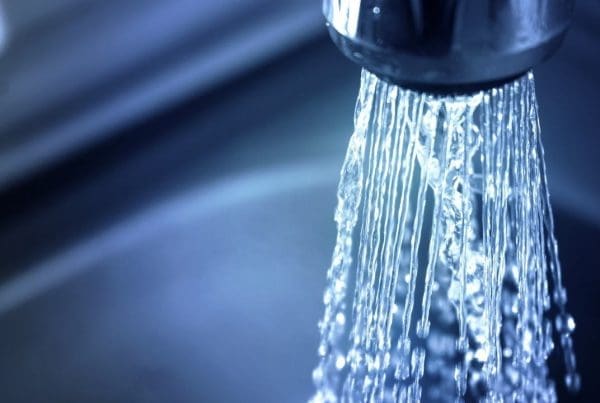When to Have Your Water Softener Serviced
If you are a homeowner in Central Indiana, you’ve probably experienced the effects of hard water. If you have hard water, there are a few things you need to be aware of to keep your home and appliances running smoothly. Hard water can cause several issues in your home, from making it difficult to get your dishes clean to damaging your plumbing.
Hard water is water that has high mineral content. The most common minerals found in hard water are calcium and magnesium. These minerals can come from several sources, including leaching from limestone or other rocks or runoff from agricultural fields.
The first thing you might notice if you have hard water is that it can be difficult to clean your dishes, and this is because the minerals in hard water can leave spots on your dishes. If you have hard water, you may want to invest in a water softener, which will remove the minerals from your water and make it easier to clean your dishes.
 Hard water can also damage your plumbing. The minerals in hard water can build up in pipes and faucet fixtures and to clog. This can lead to leaks and other issues. Hard water can cause your skin and hair to feel dry and irritated. This is because the minerals in hard water strip away the natural oils in your skin and hair. If you have hard water, you may want to use a moisturizing shampoo and conditioner to offset this effect.
Hard water can also damage your plumbing. The minerals in hard water can build up in pipes and faucet fixtures and to clog. This can lead to leaks and other issues. Hard water can cause your skin and hair to feel dry and irritated. This is because the minerals in hard water strip away the natural oils in your skin and hair. If you have hard water, you may want to use a moisturizing shampoo and conditioner to offset this effect.
If you have hard water, there are a few things you need to be aware of to keep your home and appliances running smoothly. The best way to mitigate hard water is with a water softener that uses ion exchange. Let’s look at how a water softener works and what you’ll need to do to maintain it for years to come.
How Does a Water Softener Work?
Saltwater Softeners work through ion exchange. Ion exchange is a water softening process that involves exchanging hard water ions with soft water ions. Hard water contains high levels of calcium and magnesium. Cation exchange water softeners remove the calcium and magnesium ions from hard water by exchanging them with sodium (or potassium) ions. Once all the ions are fully exchanged, the water softener undergoes a regeneration process to flush the system of excess ions and recharge it with new sodium ions.
The ion exchange process occurs when water passes through a water softener containing a bed of ion exchange resin. The resin consists of tiny beads that are coated with sodium ions. As the hard water passes through the resin, the calcium and magnesium ions are attracted to the sodium ions on the beads and exchanged for them. This process removes the hard water ions from the water and leaves behind soft water. Ion exchange is an effective way to soften water and is often used in homes and businesses. It is a safe and environmentally friendly process that does not add chemicals to the water. Ion exchange is a popular water softening method because it is efficient and relatively low-cost.
Can I get soft water without ion exchange?
The short answer is no. Salt-free water conditioners do not soften water but leave minerals that cause an off-taste and scale buildup. Unlike a water softener, a water conditioner does not remove hardness particles from your water supply. It “conditions” water and changes the chemistry of particles to keep it from building up.
A technology that has been thrown around the internet that has a lot of people curious is a “salt-free water softener.” The truth is, there is no such thing as a salt-free water softener. What they are mistakingly referring to is a water conditioner.
Without sodium, you cannot soften water—that is a scientific fact. So, while a salt-free water conditioner can change particles for a certain time, the water is still hard and will revert to hard water at some point.
What Are Some Typical Problems with Water Softeners?
Clogging — If your water supply is cloudy, it may block the resin in the softener with mud and clay. Backwashing will typically solve this problem, and adding a sediment filter before the softener could also help.
Iron or manganese fouling — Iron or manganese exposed to air or chlorine can clog the resin and prevent it from working. This is known as fouling. Sometimes it may be necessary to filter the water before it gets to your softener to avoid fouling. Commercial cleaners are available if the resin becomes fouled. Cleaners need to be used according to manufacturer instructions to avoid contamination.
Bacteria and fungi — If your water supply is not disinfected before softening, bacteria and fungi can grow on the surface, reducing the effectiveness of your softener.
What Components Need to be Serviced and How Often?
Check out this previous post for a full list of water softener components. This article will discuss the main four—the head valve, brine tank, resin bed, and salt.
 Valve — The head or control valve usually sits on top of the resin tank. It is the brain of every softener and operates the entire system, putting it through its various cycles and controlling water flow direction and rate. If your valve is not working properly, there could be an improper balance between the hardness minerals and the added salt. If you suspect a change, contact a professional to take a look—the valve may just need to be reprogrammed.
Valve — The head or control valve usually sits on top of the resin tank. It is the brain of every softener and operates the entire system, putting it through its various cycles and controlling water flow direction and rate. If your valve is not working properly, there could be an improper balance between the hardness minerals and the added salt. If you suspect a change, contact a professional to take a look—the valve may just need to be reprogrammed.
Brine Tank — Draining a brine tank is sometimes necessary for cleaning, sanitizing, and troubleshooting. You should also clean the brine tank every 1-5 years, depending on usage, hardness levels, etc. The best time to clean the brine tank is when it has almost run out of salt. This way, you don’t have to scoop it all out by hand, and the tank is lightweight so that you can move it around for easy access. Maybe you even want to take it outside where you don’t have to be super careful about making a water mess.
After the normal cleaning process, you may want to use 2 ounces of unscented household bleach mixed with 3 gallons of water to sanitize the brine tank. Let the solution sit for about 15 to 20 minutes to kill mold or mildew, then scrub with a brush. Dump the mixture and rinse carefully with clean water.
Also, be on the lookout for salt bridging. A salt bridge is a crusty buildup of salt residue that collects in your water softener tank. When a salt bridge forms, the salt will not dissolve in the water to form brine. Without the brine, resin does not regenerate properly, so the water does not get softened—a salt bridge forms in high humidity or from using low-quality salt. You can usually break up a salt bridge with a broomstick or by pouring warm water into the tank. Still, if you notice salt bridges happening frequently, there could be an underlying issue with your water softener that requires professional assistance.
Resin tank — The tall resin tank is where the actual softening occurs. It contains a bed of resin covered with sodium ions. Though resin is usually designed to last a water softener’s lifetime (around 10 to 15 years), high levels of iron and chlorine can sometimes break down resin faster than usual. You can replace the resin yourself, but a professional will probably be able to do it much quicker.
Salt — As mentioned earlier, salt is crucial to ion exchange. Check the salt level of your water softener’s brine tank once a month, and Refill when it’s below the ¼ mark. Don’t fill up to more than ⅔ to prevent bridging.
A saltwater softener can be a great addition to your home, but just like most appliances, it requires a little maintenance. If you are concerned about your water quality or want more information about water softener installation or replacement, contact C and J Water today!




